David Tickner's Blog, page 20
August 29, 2022
Pernickety, Persnickety
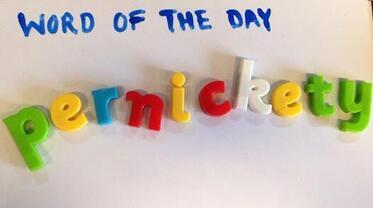 Sometimes a word just sounds like what it means. Pernickety, or persnickety, seems like one of those words. It means to be fussy about small unimportant details.
Sometimes a word just sounds like what it means. Pernickety, or persnickety, seems like one of those words. It means to be fussy about small unimportant details.Pernickety, from pernicky, is a Scottish word of unknown origin.
The Online Etymological Dictionary suggests that pernickety may be related to Dutch fijnkens (precisely, exactly) or to the English word finikin (dainty, precise in trifles) from the 1660s. Finikin is the origin of the word finicky.
Pernickety first appears in English in 1808. Persnickety, the American version of pernickety, appears in 1889.
What’s the difference between pernickety and persnickety? Just an ‘s’. Sounds pretty pernickety or finicky to me.
Reference: Online Etymological Dictionary, https://www.etymonline.com/
Published on August 29, 2022 16:56
August 9, 2022
Vacation or Holiday?
 Do you take a vacation or a holiday? When you’re on a road trip and you see a “No Vacancy” sign on a motel, does this have anything to do with the word vacation?
Do you take a vacation or a holiday? When you’re on a road trip and you see a “No Vacancy” sign on a motel, does this have anything to do with the word vacation?Vacation
The word vacation has its origins in the Proto-Indo-European (PIE) root eue and PIE wak (to leave, abandon, give out). From this source came Latin vacationem (leisure, freedom, exemption, being free from duty) and Old French vacacion (vacancy, vacant position).
The word vacation came to English in the late 14th century meaning leisure and release, freedom from obligations. By the mid-15th century, vacation also referred to an intermission in employment or schooling.
The use of vacation in American English to mean the same as holiday in British English is from 1878.
Holiday
The word holiday comes from Old English haligdaeg (holy day), from halig = holy + daeg = day. By the 14th century, a holiday referred to both a religious festival as well as a day of exemption from labor and recreation. It would seem that a holiday was a ‘time off’ from everything.
The word holiday, from 13th century haliday, appears in English in the 1500s.
The phrase “Happy holidays”, in British English, is from the mid-19th century and referred to the summer vacation from school. The Christmas greeting, “Happy Holidays”, in American English, is first seen in 1937 in cigarette ads.
In brief
Vacations and holidays now seem to be synonyms. How are these words different? Perhaps we ‘take’ a vacation but we ‘have’ a holiday. A vacation is a choice and a holiday is a given.
Speaking of which, I am taking a ‘vacation’ during the summer ‘holiday’. My wife and I are going to Newfoundland this month for a leisurely road trip from St John’s to Anse aux Meadows and back. See you later.
Image: Gros Morne National Park, Newfoundland and Labrador
Reference: Online Etymological Dictionary, https://www.etymonline.com/
Published on August 09, 2022 09:16
August 7, 2022
Canopy, Canape
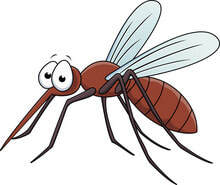 The word canopy comes from an ancient Egyptian word konops (mosquito) and Greek konopeion (an Egyptian couch with mosquito curtains).
The word canopy comes from an ancient Egyptian word konops (mosquito) and Greek konopeion (an Egyptian couch with mosquito curtains).The word canopy, meaning a suspended covering serving as a protection or shelter, came to English in the late 14th century from Old French conope (bed-curtain) and Latin conopeum (mosquito curtain).
The word canape in French, Spanish, and Portuguese, meaning a sofa or couch, comes from Greek konopeion (Egyptian couch). Italian canape is borrowed from French.
What does the English word canape (hors d’hoeuvre), from 1750, have to do with a couch or a sofa? The short answer is that a canape was a before dinner snack served to guests sitting on the couches in the lounge before they were called into the dining room for dinner.
In its origins, the French term hors d’oeuvre meant ‘out of the ordinary’ or ‘apart from the main work’. Hors d’oeuvres came to English in 1714 meaning outside of the ordinary courses of a meal or apart from the main meal.
Reference: Online Etymological Dictionary, https://www.etymonline.com/
Published on August 07, 2022 13:11
August 3, 2022
Aperitif
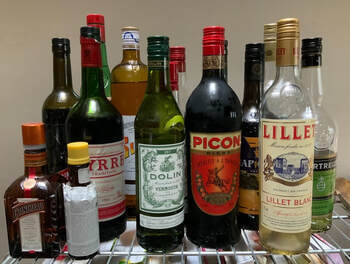 “Would you care for an aperitif before dinner ma’am? sir?”
“Would you care for an aperitif before dinner ma’am? sir?”Did you know that in its origins the word aperitif means a laxative? Yes, the word aperitif comes from French aperitif (laxative, laxative liqueur) and from Latin aperitivus, aperire (to open, to uncover). Let’s not talk about what needs to open or to be uncovered.
The word aperitif came to English in the 1890s meaning a little drink to loosen you up, to awaken the digestive juices, so to speak, before dinner. Maybe not so much as to clear the decks for action as to simply stimulate the appetite.
Reference: Online Etymological Dictionary, https://www.etymonline.com/
Published on August 03, 2022 22:10
July 29, 2022
Lammas Day
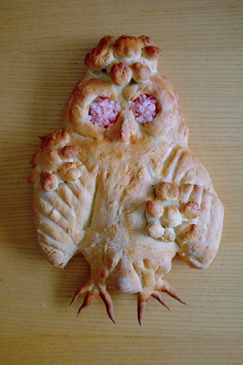 Why do we have a holiday at the beginning of August? When I was growing up in Saskatchewan I used to wonder why this holiday was called the ‘August Bank Holiday’. What did this holiday have to do with banks and banking? Today, here in British Columbia, the holiday at the beginning of August is simply called BC Day.
Why do we have a holiday at the beginning of August? When I was growing up in Saskatchewan I used to wonder why this holiday was called the ‘August Bank Holiday’. What did this holiday have to do with banks and banking? Today, here in British Columbia, the holiday at the beginning of August is simply called BC Day.Where does this holiday come from?
It has its origins in ancient harvest festivals, notably the Lammas Day festival of Anglo-Saxon England (5th to 11th centuries CE). Lammas Day celebrated the first bread made from the wheat harvested each summer season, usually around the beginning of August.
The word Lammas comes from Old English hlafmaesse (loaf mass); that is, the mass or worship service at which these first loaves were brought to the local church and blessed in thanksgiving. Later this bread was broken into four parts and placed in the four corners of a granary as a protection for the garnered grain.
Lammas Day, like other Christian festivals, comes from a much earlier pre-Christian English harvest festival, the Gule of August, a similar dedication of the first fruits of the harvest.
And, in Shakespeare’s Romeo and Juliet, we learn that Lammas Eve was Juliet’s birthday. In one part of the play (line 1.3.19), a character says of Juliet, “Come Lammas Eve at night she shall be fourteen.”
Anyway, enjoy BC Day (or Lammas Day) or whatever you call this long weekend where you live!
Image: Lammas loaf owl with salt eyes (Wikipedia)
Reference: Online Etymological Dictionary, https://www.etymonline.com/
https://en.wikipedia.org/wiki/Lammas
Published on July 29, 2022 21:40
July 27, 2022
Brownies
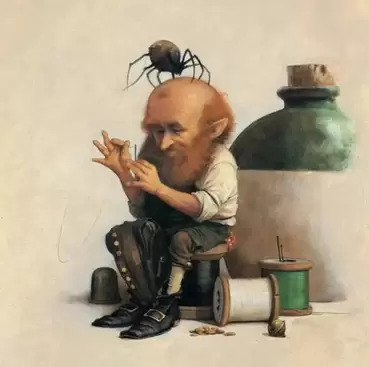 What do you think of when you think of Brownies? Nutty chocolate squares? Children in brown uniforms dancing around a toadstool? A team mascot? A cheap camera? A Hellboy character?
What do you think of when you think of Brownies? Nutty chocolate squares? Children in brown uniforms dancing around a toadstool? A team mascot? A cheap camera? A Hellboy character?A brownie is a household spirit or benevolent goblin from Scottish folklore. A brownie or in Scots, a broonie, is also known in Scottish Gaelic as a brunaidh or a gruagach (the long-haired one). A brownie was said to be small, shaggy-haired, and wild. Brownies came out at night while the people of the house were sleeping and performed various household chores and farming tasks. Brownies were easily offended and would leave the home forever if insulted in some way. They were mischievous and liked to pull pranks. They could even turn malicious.
The word brownie, from the 1510s, is a short form of the Scots term, ‘a wee brown man’.
In 1865, Juliana Horatia Ewing wrote a popular best-selling book, The Brownies, based on these folklore figures. These brownie figures became the Hello Kitty or Barbie or Power Ranger figures of their time. In 1919, the name Brownie was adopted by Juliette Gordon for the lowest level in the Girl Guides (founded in 1909).
In the late 19th and early 20th centuries, there was a mania for products branded Brownie. For example, sports teams such as football’s Cleveland Browns and baseball’s St Louis Browns each had a brownie for a mascot. The small square of rich chocolate cake with nuts known as a brownie is from 1897, the inexpensive Brownie camera is from 1900, and a Brownie point, originally a credit for achievement in Scouting or Guiding, is from this period.
However, by 1959, brownie points had come to mean something gained by servile or sycophantic behavior. Brownie points and brown-nosing are now related terms; however, brown-nosing has its origins in American military slang from the 1930s and 1940s.
In the early 1990s, the author Mike Mignola took the word Gruagach as the name of a villainous character in his Hellboy series. As you may suspect, this Gruagach is not the kind of creature you’d want hanging around your home at night.
Reference: Online Etymological Dictionary, https://www.etymonline.com/
https://en.wikipedia.org/wiki/Brownie_(folklore)
Published on July 27, 2022 20:42
July 22, 2022
Pixies and Pixels
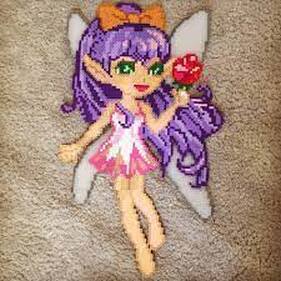 Were you a Brownie? Were you ever a pixie? Ever been pixilated? What is the difference between a pixie and a pixel?
Were you a Brownie? Were you ever a pixie? Ever been pixilated? What is the difference between a pixie and a pixel?Pixie
The word pixie is a word of obscure origin, first seen around 1630. The word’s original home in the far southwest of England suggests that the word might have a Celtic origin. Or, perhaps it is from a Scandinavian word pyske (small fairy). The word pixie is associated with the fairy rings of old pastures where they are supposed to have danced by moonlight.
The earliest reference to pixie is ‘pixy-path’ (bewilderment); i.e., a path on which one is led astray by pixies. Other pixie-related terms include pixie-puff, a species of fungus, and pixie-purse, the egg case of a shark, skate, or ray found washed up on the shore.
To be pixilated, a term first seen in 1848, means to be mildly insane, bewildered, or tipsy.
In 1865, Juliana Horatia Ewing wrote a popular book, The Brownies, based on Scottish folklore figures. This name was adopted in 1919 by Juliette Gordon for the lowest level in the Girl Guides (founded in 1909). Pixies, Elves, Gnomes, and so on were the names given to the small groups (the Sixes) of each Brownie Unit. Today, these Sixes usually are named after various woodland animals.
A brownie or broonie, a Scots term from Gaelic brunaidh, is a household spirit who comes at night to perform various household tasks. Brownies are mischievous and love to pull pranks. Traditionally, brownies are male, completely covered in brown hair, and ugly.
How did the word brownie shift in meaning from an ugly brown-haired man to a pre-teen girl in a brown uniform? Let that be another story.
By the way, speaking of folklore, although similar, pixies are not to be confused with fairies and elves. http://www.davidtickner.ca/blog/fairy
Pixel
The word pixel has its origins in the word pic (from 1884), a shortening of the word picture. In the 1930s, the word pic was short for motion picture. Also, in the 1930s, the word pix appears as the plural of pic.
The word pixel, meaning a small, square, single-colored display element, many of which comprise an image, is from 1969 and was coined to describe the photographic elements of a television image. The word pixel comprises pix + el, the first syllable of element.
The term pixelation, from 1991, means a graphic display effect in which all the pixels of the image are visible; e.g., the image at the beginning of this article is a pixelation of a pixie.
Reference: Online Etymological Dictionary, https://www.etymonline.com/
https://en.wikipedia.org/wiki/Brownie_(folklore)
Published on July 22, 2022 10:51
July 17, 2022
Heckle
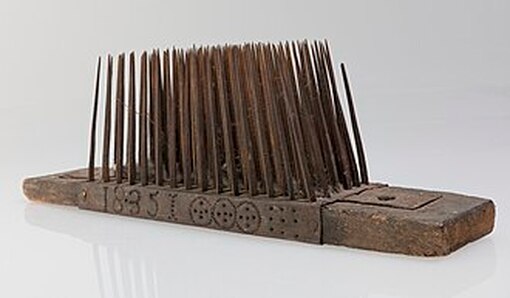 Have you ever heckled? Or, been heckled? Have you ever been the recipient or sender of biting remarks?
Have you ever heckled? Or, been heckled? Have you ever been the recipient or sender of biting remarks?Where does this word come from? No one is certain but one suggestion is that heckle is from the Proto-Indo-European (PIE) root keg (hook, tooth). Old English hecel and 14th century English hechel were words meaning a flax comb. The verb ‘to heckle’, from the early 14th century, meant to comb flax or hemp with a heckle.
Heckling is the process of combing flax in order to remove impurities and to make the flax straight, clean, and ready for spinning. After heckling and spinning, flax is ready to be woven into linen.
In the 18th century Scotland, heckle meaning to question severely in order to uncover weakness; in particular, the public questioning of parliamentary candidates. The term heckler, someone who taunts a public speaker, is from 1885.
I can begin to see the connection between a heckling comb for cleaning flax and taking a not so fine-tooth comb to what ever the political candidates are saying and promising.
Image: Heckling comb / https://en.wikipedia.org/wiki/Hecklin...
Reference: Online Etymological Dictionary, https://www.etymonline.com/
Published on July 17, 2022 09:26
July 12, 2022
Intersectionality
 What comes to mind when you hear the word intersection? Geometry? Mathematics? Traffic? Social justice?
What comes to mind when you hear the word intersection? Geometry? Mathematics? Traffic? Social justice?The word intersection has its origins in the PIE root sek (to cut) and Latin secare (to cut). Latin inter- (between) + secare = intersecare (to intersect, to cut asunder). The word intersection (the act or fact of crossing) came to English in the 1550s from 14th century French intersection and Latin intersectionem (a cutting asunder, an intersection).
In English, the word intersection was originally a term in geometry (e.g., the intersection of two lines). The use of intersection to mean a crossroads or a place where two or more roads meet is from 1864. The verb ‘to intersect’, from the 1610s, comes from the noun intersection.
In 1989, the term intersectionality was coined by Kimberlé Crenshaw to describe the overlapping and intersecting of persistent inequalities characterized by social categorizations “such as gender, caste, sex, race, ethnicity, class, sexuality, disability, weight, physical appearance, and height) as experienced by marginalized individuals and groups. Such overlapping and intersecting of social identities may be both empowering and oppressing.”
Such inequalities are mutually constitutive and enabling rather than isolated and distinct (Merriam-Webster). An intersectional analysis considers the combinations of all the factors that apply to an individual rather than considering each factor in isolation. The term intersectionality was not widely adopted and used until the 2000s.
Consider metaphors related to intersections and crossroads (e.g., “I was at a crossroads in my life”). An intersection with traffic lights and signs is usually about ‘stop and go’ control. In contrast, an intersection designed as a roundabout or traffic circle is about flow and responsible individual responses to the traffic. Could we consider intersectionality in terms of metaphors of both control and flow? Could we consider intersectionality in terms of the relationships between the community and the individual, between the givenness of any situation and the options for responsible choice?
Intersectionality is not just a descriptive term. It can also be a metaphor for action.
Reference: Online Etymological Dictionary, https://www.etymonline.com/
Intersectionality. (2022, May 13). In Wikipedia. https://en.wikipedia.org/wiki/Intersectionality
Published on July 12, 2022 11:56
July 10, 2022
Sequin
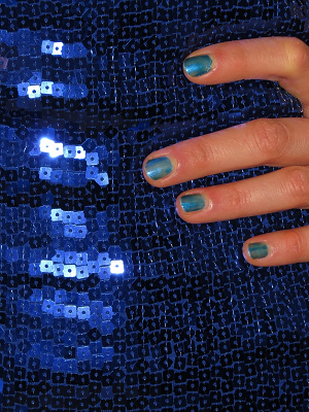 The word sequin comes from Arabic sikka (a minting die) and Italian zecca (the mint; notably, the mint in Venice). From these sources come Italian zecchino and 17th century French sequin, both meaning gold coins.
The word sequin comes from Arabic sikka (a minting die) and Italian zecca (the mint; notably, the mint in Venice). From these sources come Italian zecchino and 17th century French sequin, both meaning gold coins.The English word sequin, meaning an ornamental disc or spangle, is from 1852 and describes the attire of women in the Orient who wore Venetian coins perforated as earrings or necklaces.
Gold sequins have been part of luxury clothing for 2500 years. In the 1930s, manufacturers developed sequins using gelatin covered with lead paint. In addition to being a health hazard, these were not practical as they melted with body heat and dissolved in water. Modern sequins are now made of various plastics.
Reference: Online Etymological Dictionary, https://www.etymonline.com/
Published on July 10, 2022 12:19



